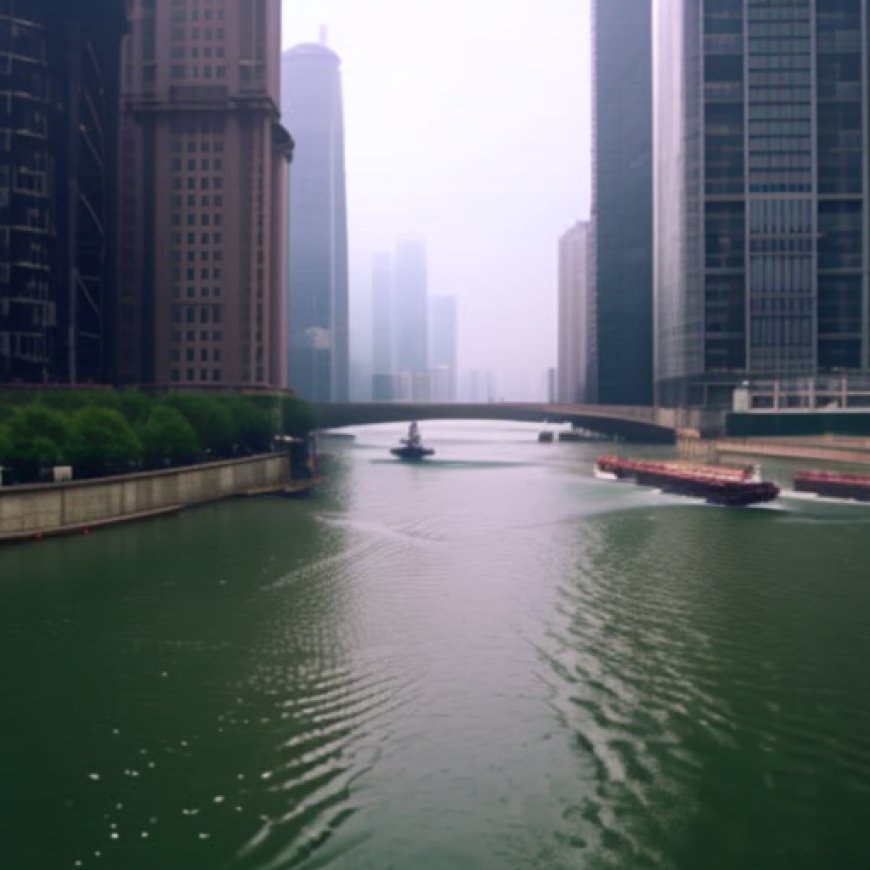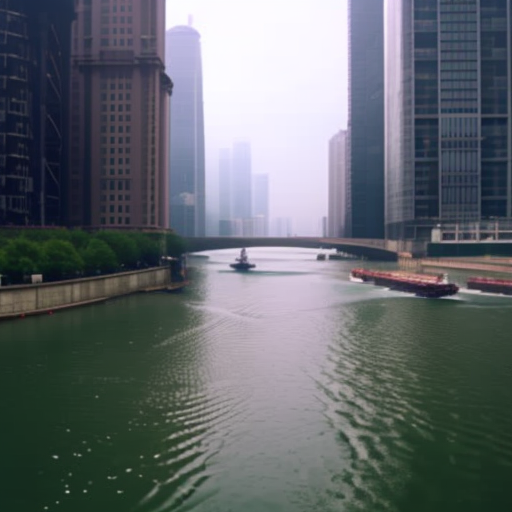Pollution control improves water quality in the Yangtze
Pollution control improves water quality in the Yangtze China Daily


China’s Commitment to Safeguarding the Natural World
Editor’s note: As protection of the planet’s flora, fauna and resources becomes increasingly important, China Daily is publishing a series of stories to illustrate the country’s commitment to safeguarding the natural world.
The Journey of Chenhu Lake Wetland Nature Reserve
Located in Wuhan, Hubei province, the 11,600-hectare Chenhu Lake Wetland Nature Reserve has undergone a remarkable transformation from a polluted area to a thriving ecosystem. The wetland not only supports the mighty Yangtze River but also serves as a crucial wintering, breeding, and migratory stopover site for various bird species in Asia.
Feng Jiang, an engineer working for the management bureau of the reserve, witnessed the positive changes firsthand. In 2008, the reserve’s heavily polluted waters led to a decline in migratory birds. However, through concerted efforts to regulate industry and clean up the water, the reserve has seen a significant increase in the number of migratory birds. Last year, approximately 100,000 migratory birds were estimated to have wintered in the reserve, compared to only 20,000 to 30,000 in 2008.
Promoting Ecological Civilization
The progress made in Chenhu reflects China’s commitment to promoting ecological civilization. President Xi Jinping has emphasized the importance of balanced and sustainable development that prioritizes harmonious coexistence between humans and nature. This concept is at the core of China’s efforts in the Yangtze River Basin.
Back in 2008, the aquaculture enclosures in the reserve had led to unsustainable fish breeding practices, causing adverse environmental impacts. However, after the 18th National Congress of the Communist Party of China in 2012, which highlighted the significance of ecological civilization, the government started providing more support in terms of funding and policies for environmental conservation.
Measures such as a compensation mechanism for protected wetlands and the ban on overdevelopment of the Yangtze River have been implemented to prioritize ecological benefits over economic gains. In 2017, all aquaculture enclosures and cages in the Chenhu reserve were removed, and in 2019, remaining production activities were cleared.
Environmental Improvements in the Yangtze River Basin
The efforts to protect and restore the Yangtze River Basin have resulted in significant environmental improvements. The quality of water in the basin has seen a remarkable increase, with 98.5% of monitoring stations reporting “fairly good” water quality by the end of last year. Pollution control measures have been implemented in various sectors, including chemical enterprises, urban sewage and waste treatment, the shipping industry, agricultural production, and tailing ponds.
Chemical enterprises along the Yangtze River have been shut down, relocated, or transformed to produce environmentally friendly products. The construction of eco-friendly chemical industrial parks has further contributed to reducing water pollution. Additionally, the establishment of wastewater treatment facilities and sewage collection pipelines has significantly improved water quality.
Despite these achievements, challenges remain in Yangtze conservation. Prominent pollution during the flood season, inadequate ecological infrastructure, encroachment on natural shorelines, and disruption of aquatic ecosystems are some of the issues that need to be addressed. The Ministry of Ecology and Environment aims to promote coordinated management of water resources, aquatic ecosystems, and the water environment to ensure sustainable development.
A Crucial Juncture for Environmental Conservation
The environmental conservation and high-quality development of the Yangtze River are now at a crucial juncture. China remains committed to pursuing overall ecological conservation and prioritizing high-level protection and high-quality development. Efforts will be made to propel all aspects of environmental conservation to new heights.
Contact the writers at houliqiang@chinadaily.com.cn
SDGs, Targets, and Indicators
1. Which SDGs are addressed or connected to the issues highlighted in the article?
- SDG 6: Clean Water and Sanitation
- SDG 14: Life Below Water
- SDG 15: Life on Land
2. What specific targets under those SDGs can be identified based on the article’s content?
- SDG 6.3: By 2030, improve water quality by reducing pollution, eliminating dumping and minimizing release of hazardous chemicals and materials, halving the proportion of untreated wastewater, and substantially increasing recycling and safe reuse globally.
- SDG 14.1: By 2025, prevent and significantly reduce marine pollution of all kinds, particularly from land-based activities, including marine debris and nutrient pollution.
- SDG 15.1: By 2020, ensure the conservation, restoration, and sustainable use of terrestrial and inland freshwater ecosystems and their services, in particular forests, wetlands, mountains, and drylands, in line with obligations under international agreements.
3. Are there any indicators mentioned or implied in the article that can be used to measure progress towards the identified targets?
- Indicator for SDG 6.3: Proportion of bodies of water with good ambient water quality.
- Indicator for SDG 14.1: Marine pollution index.
- Indicator for SDG 15.1: Proportion of important sites for terrestrial and freshwater biodiversity that are covered by protected areas.
Table: SDGs, Targets, and Indicators
| SDGs | Targets | Indicators |
|---|---|---|
| SDG 6: Clean Water and Sanitation | 6.3: By 2030, improve water quality by reducing pollution, eliminating dumping and minimizing release of hazardous chemicals and materials, halving the proportion of untreated wastewater, and substantially increasing recycling and safe reuse globally. | Proportion of bodies of water with good ambient water quality. |
| SDG 14: Life Below Water | 14.1: By 2025, prevent and significantly reduce marine pollution of all kinds, particularly from land-based activities, including marine debris and nutrient pollution. | Marine pollution index. |
| SDG 15: Life on Land | 15.1: By 2020, ensure the conservation, restoration, and sustainable use of terrestrial and inland freshwater ecosystems and their services, in particular forests, wetlands, mountains, and drylands, in line with obligations under international agreements. | Proportion of important sites for terrestrial and freshwater biodiversity that are covered by protected areas. |
The article highlights the efforts made by China to protect and restore the Chenhu Lake Wetland Nature Reserve, which is connected to SDGs 6, 14, and 15. SDG 6 focuses on clean water and sanitation, SDG 14 addresses life below water, and SDG 15 pertains to life on land. The specific targets identified from the article include SDG 6.3, SDG 14.1, and SDG 15.1. The indicators mentioned in the article that can be used to measure progress towards these targets are the proportion of bodies of water with good ambient water quality (SDG 6.3), the marine pollution index (SDG 14.1), and the proportion of important sites for terrestrial and freshwater biodiversity covered by protected areas (SDG 15.1).
Behold! This splendid article springs forth from the wellspring of knowledge, shaped by a wondrous proprietary AI technology that delved into a vast ocean of data, illuminating the path towards the Sustainable Development Goals. Remember that all rights are reserved by SDG Investors LLC, empowering us to champion progress together.
Source: chinadaily.com.cn

Join us, as fellow seekers of change, on a transformative journey at https://sdgtalks.ai/welcome, where you can become a member and actively contribute to shaping a brighter future.







